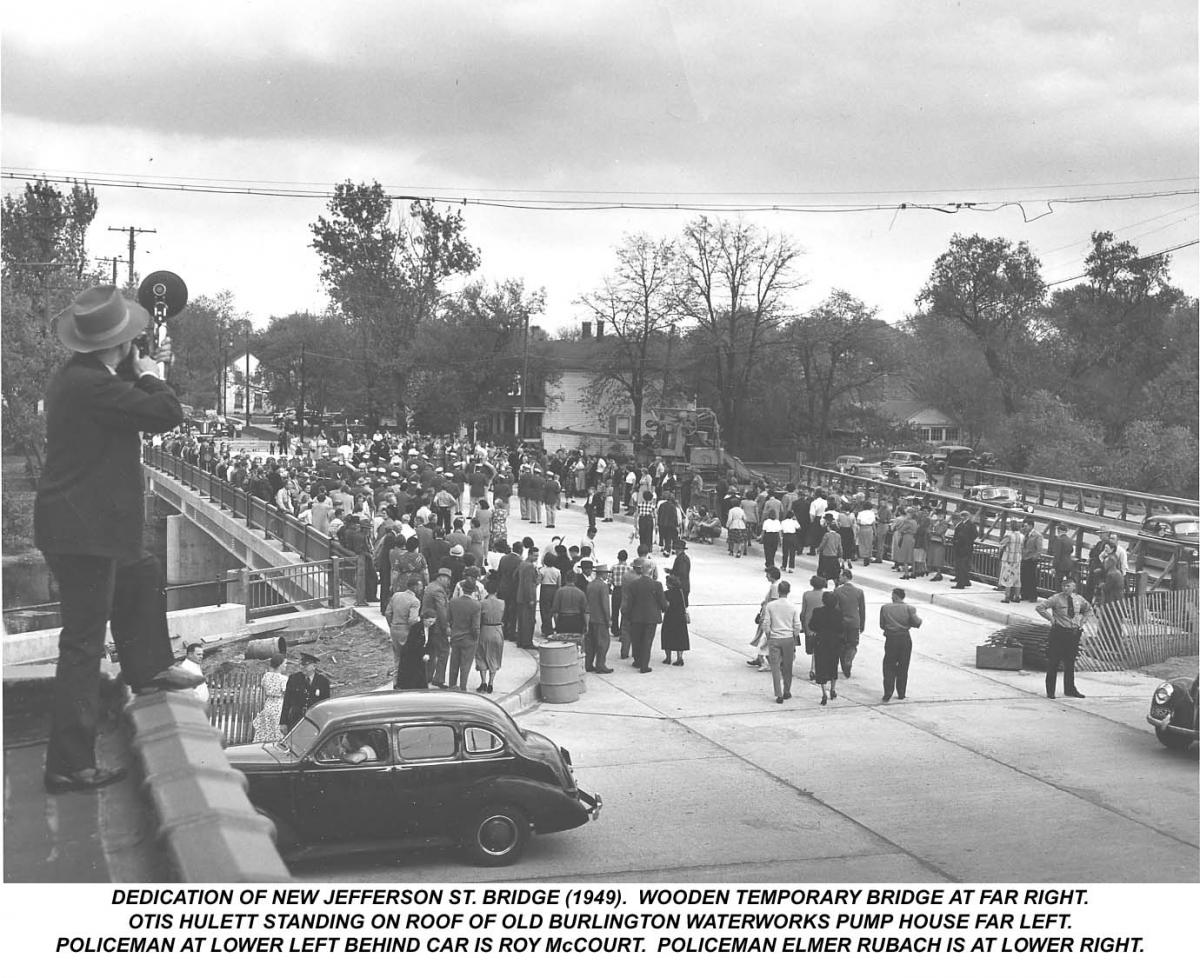BILL FROOK - BURLINGTON BOOSTER
BILL FROOK - STATE SREET BRIDGE BACKER AND BURLINGTON BOOSTER
 In their mind's eye, those of a certain age in the Burlington area will remember William F. "Bill" Frook as a community character. Walking the downtown streets dressed as Father Time (left) or marching through the Brass Works carrying an American flag, Bill Frook, who lived in Burlington almost continuously from 1903 until his death in 1962, could always be counted on to let people know where he stood. Frook was especially passionate on one subject -- the need for a State Street bridge or viaduct that would go over the Fox River and the railroad tracks, connecting State Street's two portions and eliminating the two corners and the grade crossing of the State Street-Main Street-Jefferson Street route through the city.
In their mind's eye, those of a certain age in the Burlington area will remember William F. "Bill" Frook as a community character. Walking the downtown streets dressed as Father Time (left) or marching through the Brass Works carrying an American flag, Bill Frook, who lived in Burlington almost continuously from 1903 until his death in 1962, could always be counted on to let people know where he stood. Frook was especially passionate on one subject -- the need for a State Street bridge or viaduct that would go over the Fox River and the railroad tracks, connecting State Street's two portions and eliminating the two corners and the grade crossing of the State Street-Main Street-Jefferson Street route through the city.
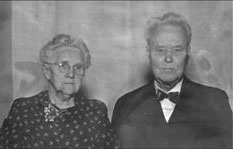 Frook spoke often about the advantages of a State Street bridge, wrote several letters over the years to the local newspapers, and submitted a number of petitions to the city council requesting action on the project. He led a losing fight for the project when a referendum on the proposal was put before the people of Burlington in 1941. Yet he kept up his efforts even in the years after the referendum was defeated. But while the State Street bridge project was always in the forefront of his civic improvement efforts, Bill Frook was also full of ideas on other changes that he thought would enhance life in Burlington and boost the city's reputation as a thriving community.
Frook spoke often about the advantages of a State Street bridge, wrote several letters over the years to the local newspapers, and submitted a number of petitions to the city council requesting action on the project. He led a losing fight for the project when a referendum on the proposal was put before the people of Burlington in 1941. Yet he kept up his efforts even in the years after the referendum was defeated. But while the State Street bridge project was always in the forefront of his civic improvement efforts, Bill Frook was also full of ideas on other changes that he thought would enhance life in Burlington and boost the city's reputation as a thriving community.
Alice and William Frook - 50th Anniversary - March 1950
Frook Suggests City's 1928 Needs
In January 1928 the Standard Democrat printed the following article listing improvements suggested by Frook. The article also included a list of changes that had been made in the preceding years. (Some parenthetical material has been added to show more recent occupants and changes in street names and to "date" some of the events.)
William F. Frook has taken the time to study the needs of Burlington and has outlined a program for this city which is so full of good suggestions coupled with good, sound common sense, that we are pleased to publish it and are sure that every progressive citizen will be glad to put his shoulder to the wheel to see that the program is carried out. His program is:
-- Construction of a modern viaduct over Fox river and Soo line on State Street.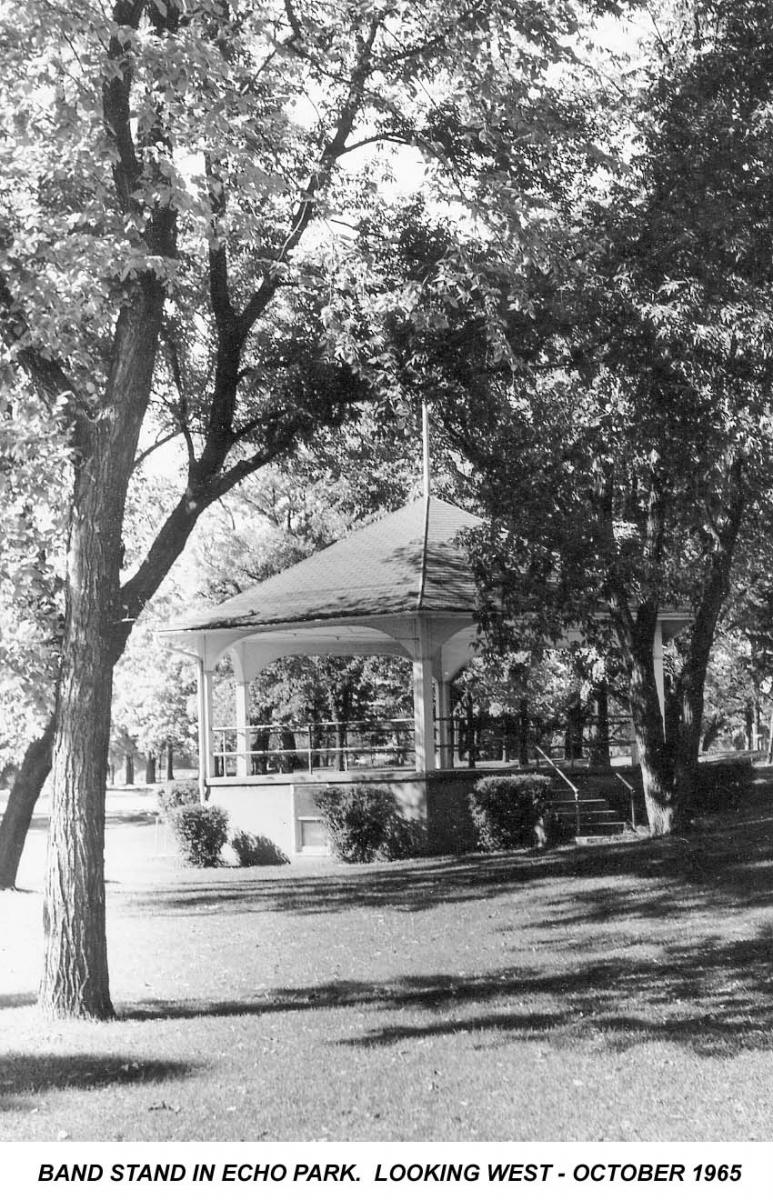
-- Construction of a sanitary sewer on McHenry Street.
-- Construction of a concrete pavement on McHenry Street.
-- Construction of a modern band shell for the Burlington Harmony band. (Right)
-- Municipal bathing beach and bath house on Brown's lake.
-- Elimination of circle at intersection of Wilmot Avenue (now South Pine Street), Chandler Boulevard and Henry Street. This is a very dangerous corner; drivers are continually passing to the left, some even driving over it. This street faces the new high school and carries a heavy traffic, and this circle should be removed for the purpose of guarding against accidents and loss of life.
-- Elimination of junk pile on upper Geneva Street (now West State Street).
-- Protection for the strange motorist at the foot of Geneva Street (now Milwaukee Avenue), a dark place at night. Stranger could drive into the Soo line tracks. (At that time, the Milwaukee Avenue bridge near the Veterans Memorial Building had not yet been built.)
-- Protection for the strange motorist at the foot of State Street, driving into the jungle on the east and west sides of Fox river.
-- Inauguration of the juvenile police to regulate traffic at the schools during intermissions and noon hour.
-- Municipal drinking fountain at city hall corner.
-- Municipal airport on Wilmot Avenue (South Pine Street) between the avenue and the Soo line tracks on Ed. Brooks' field.
-- Painting of the word "Burlington" in eight foot letters on the roof of the city hall to guide the aviator and impress upon him a real live-wire town.
-- An illuminated sign at the police station for the convenience of strangers and others with the words "Police Station" painted thereon.
-- Special electrical illumination of all main arteries leading into the city of Burlington.
-- Construction of a concrete sidewalk to the Futurist plant (underwear manufacturer on Calumet Street), so that employees do not have to walk in dirt, mud and snow.
-- Appointing of a city planning commission to work in conjunction with the city council in matters pertaining to city improvement, and to serve without pay.
While thinking of a program for the future, Mr. Frook had in mind the wonderful progress Burlington has made the past few years. This city has made rapid strides, more rapid than we who are in everyday touch with it realize. Mr. Frook summarizes some of the changes as follows:
-- Building of the new high school - below left (opened 1925) and the new St. Mary's high school - below right (dedicated 1926).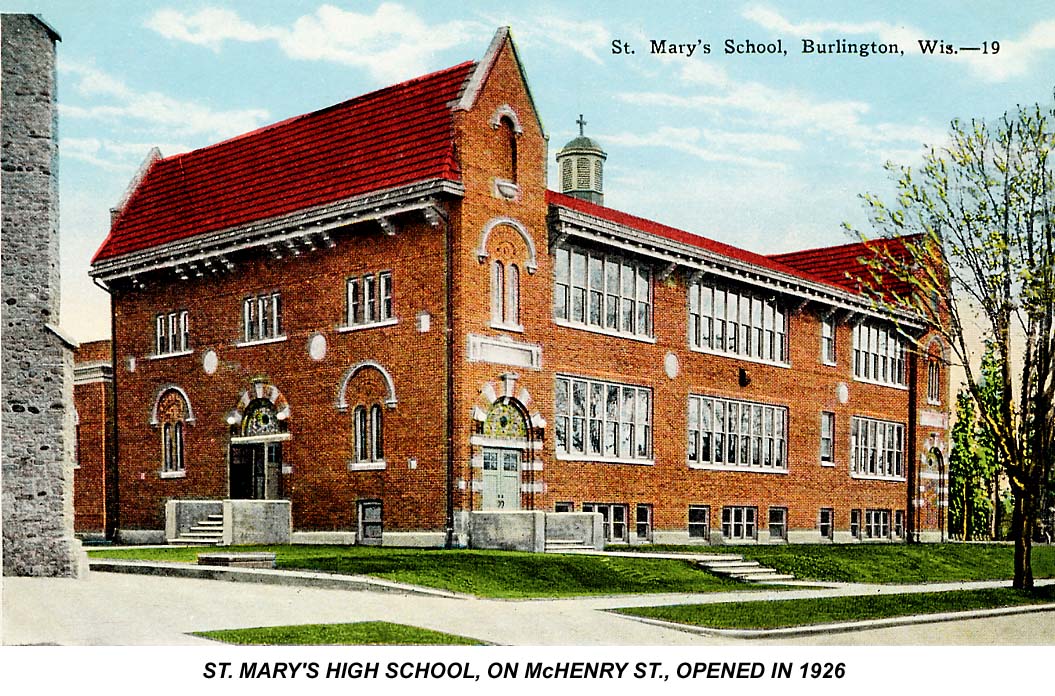
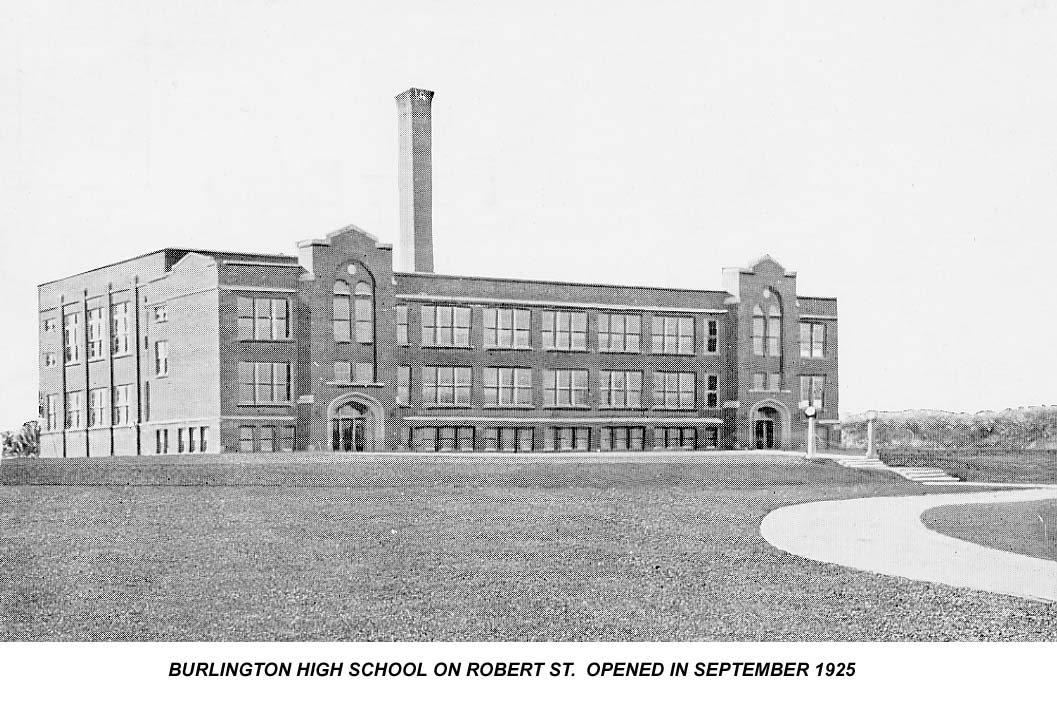
-- Erection of the modern Memorial hospital building - right (1924).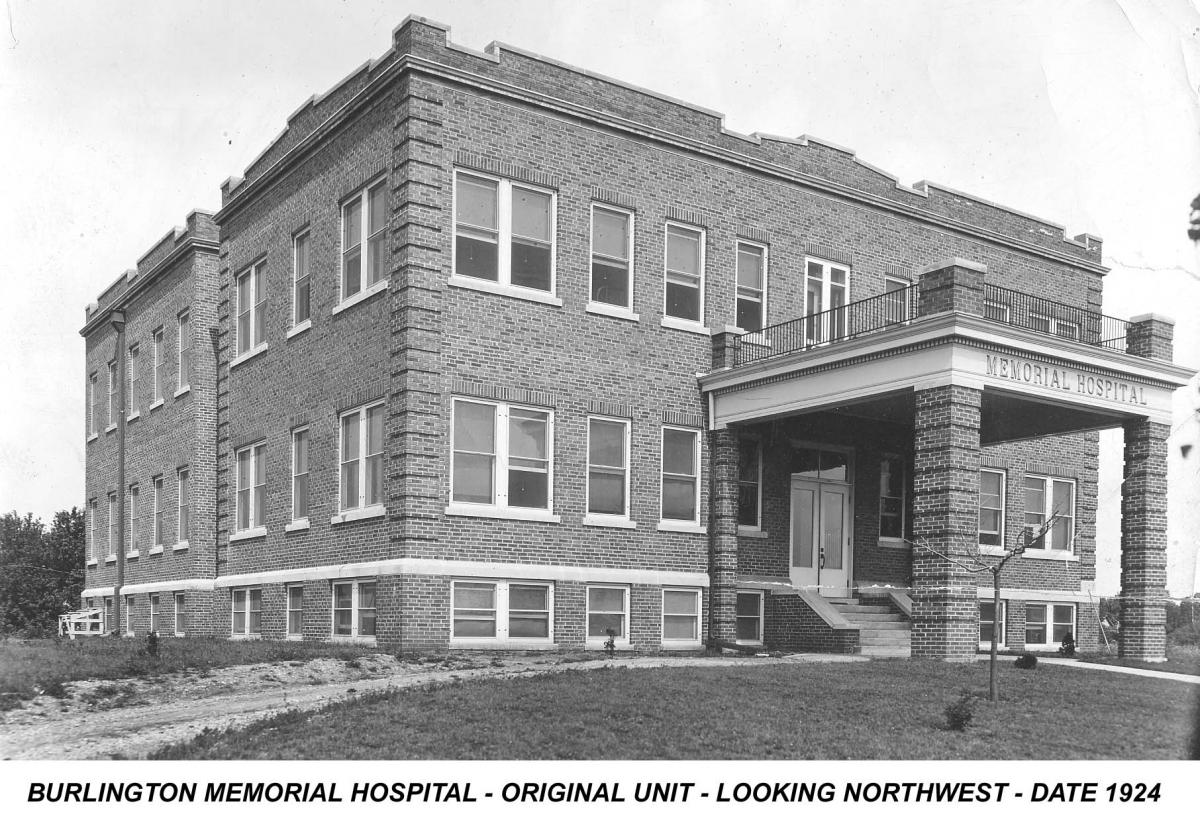
-- Construction of the Futurist Co. factory (on Calumet Street) (1925).
-- The passing of the old Jones House and establishment of the new, beautiful and up-to-date Hotel Badger (various improvements and additions 1915-23).
-- The passing of the old Hotel Burlington into the new, modern Hotel Burlington - below (various improvements and additions 1915-27).
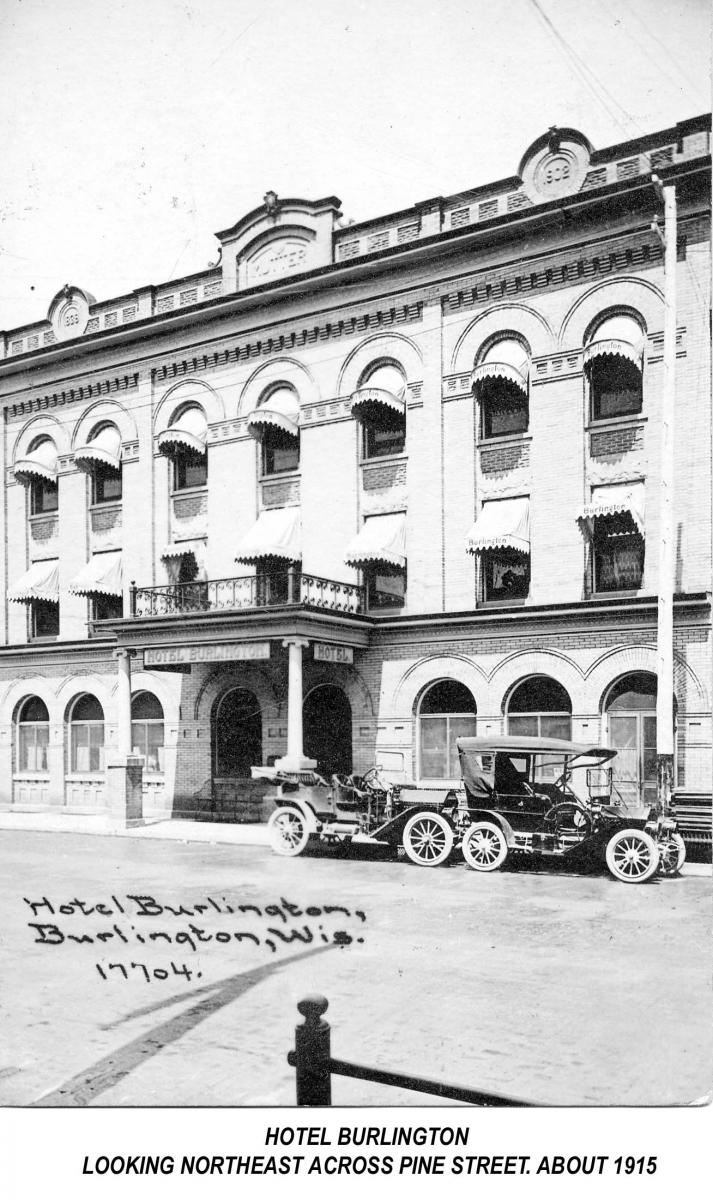 -- The passing of the old Klein property (on corner of Chestnut and Mill Streets) into the new and modern Hansen filling station (1927).
-- The passing of the old Klein property (on corner of Chestnut and Mill Streets) into the new and modern Hansen filling station (1927).
-- The passing of the Pat Cunningham farm into the new, modern and beautiful Brown's lake golf course (1926).
-- The passing of the old Teutonia hall into the beautiful remodeled new Fischer's Orpheum theatre (1927). (Note: The building, which was on the corner of what is now North Kane Street and Milwaukee Avenue, burned down in 1930. Morina's Phillips 66 Service Station now occupies the site.)
-- The passing of the old T. M. E. R. & L. (Milwaukee Electric Rail & Light) Co. waiting room into the modern, new and beautiful terminal building - below (later the Standard Press building on N. Pine Street) (1926).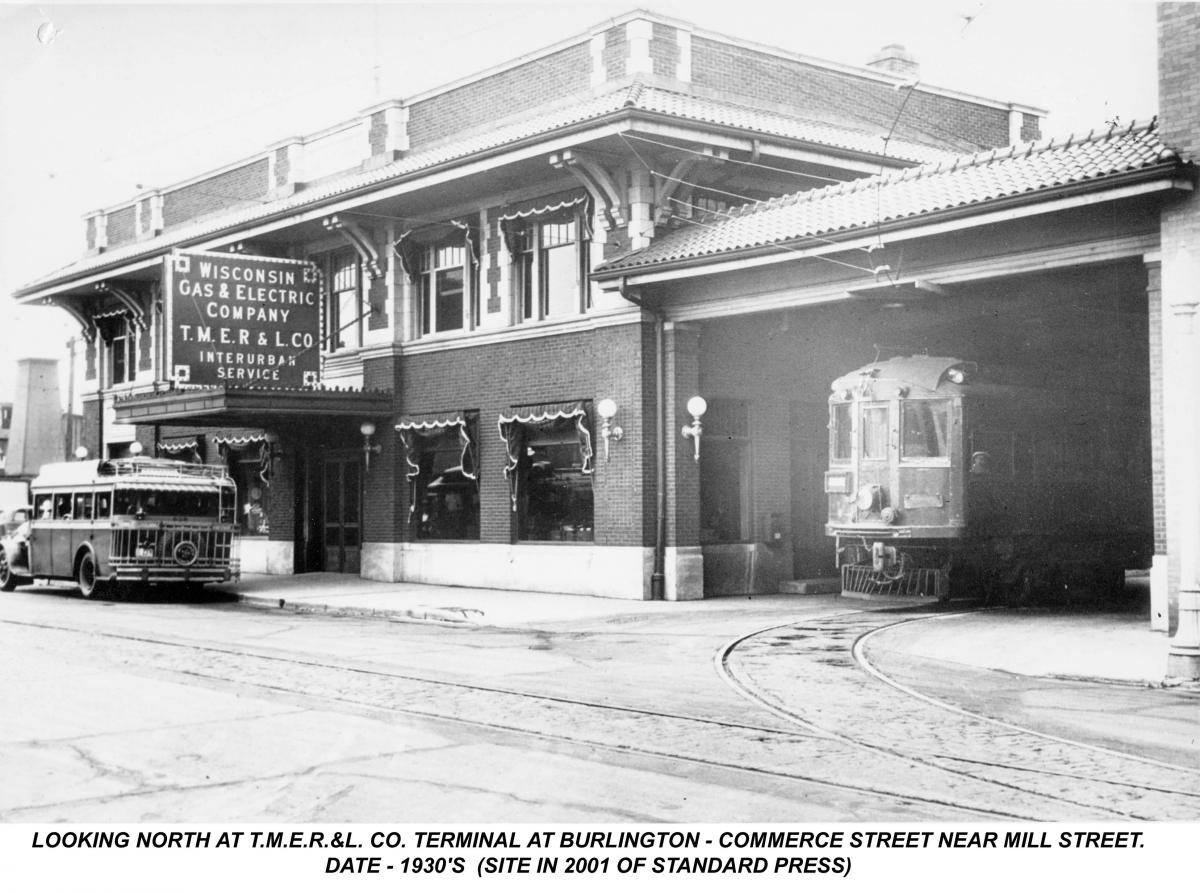
-- The passing of the Frank Ayers training track for race horses (north of the mill pond) (1927).
-- The passing of the C. B. Wagner Hardware Co. (on Pine Street where Classy Lady Resale was later located) (1927).
-- The passing of the Citizens Gas Co. into the more modern and greater Wisconsin Southern Gas Co. (1927).
-- The passing of the Farmers' Dairy Co. into the progressive, wide-awake Murphy Products Co. (where the Maple Leaf Farms plant and Vorpagel Service Inc., were later located) (1925).
-- The passing of the old city hall (on southeast corner of Pine and Washington Streets) into the live-wire Bazal's creamery - below (where Trend Setters was later located) (1927).
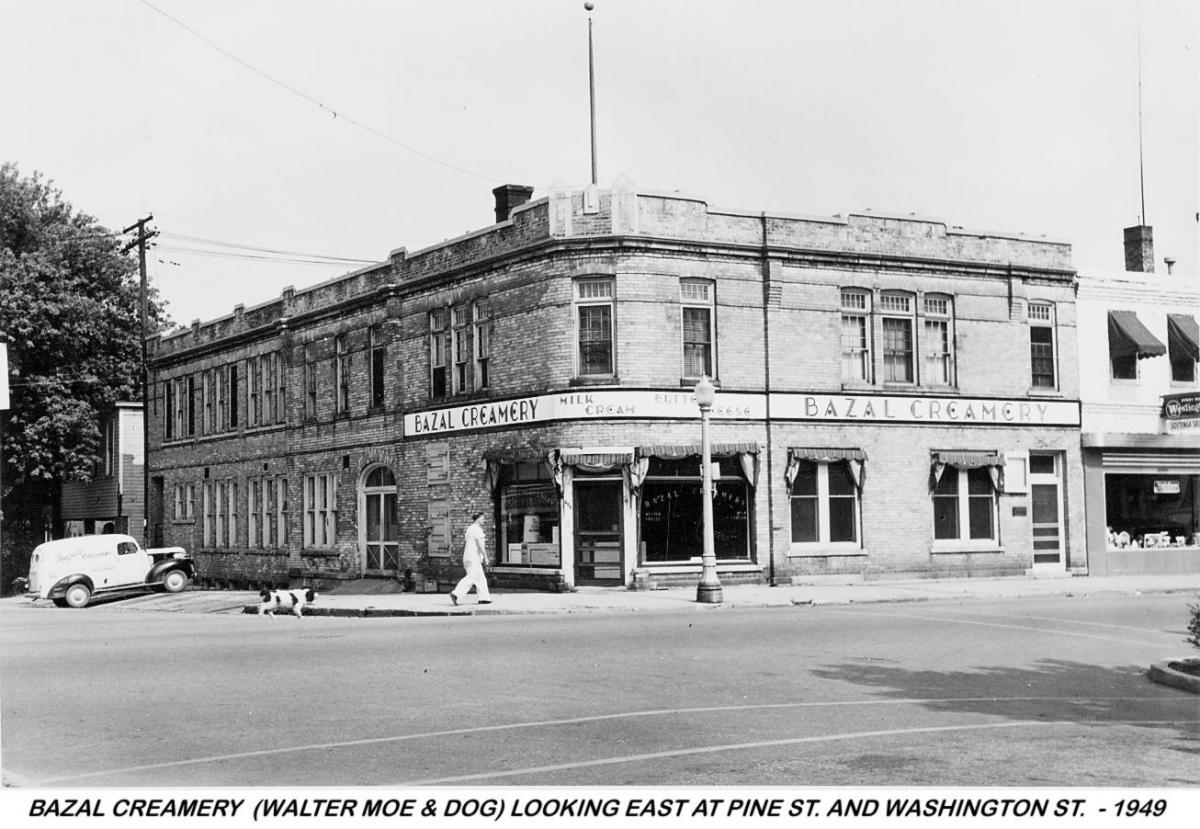
-- The passing of the pioneer Jones House (on Geneva Street, now Milwaukee Avenue) into the beautiful new Plaza theatre (1927).
-- The passing of the Frank Zwiebel property into the modern Agner garage (where Bigelow Appliance Sales & Service was later located on Milwaukee Avenue) (1927).
-- The passing of the old Appleyard house into the Burlington Motor Car Co. (where the Brick Yard Pub & Grill was later located on South Pine Street) (1922).
-- The passing of the old Wilmot Avenue (now South Pine Street) into the new and beautiful forty foot concrete pavement.
-- The passing of the ancient stores on Pine Street (east side of street between Washington and Jefferson Streets) into the beautiful, up-to-date Tichlofen stores and flats (1926-27).
-- The passing of the old clay hole and dumping ground into the beautiful Athletic park - below (later called Beaumont Field) (1922).
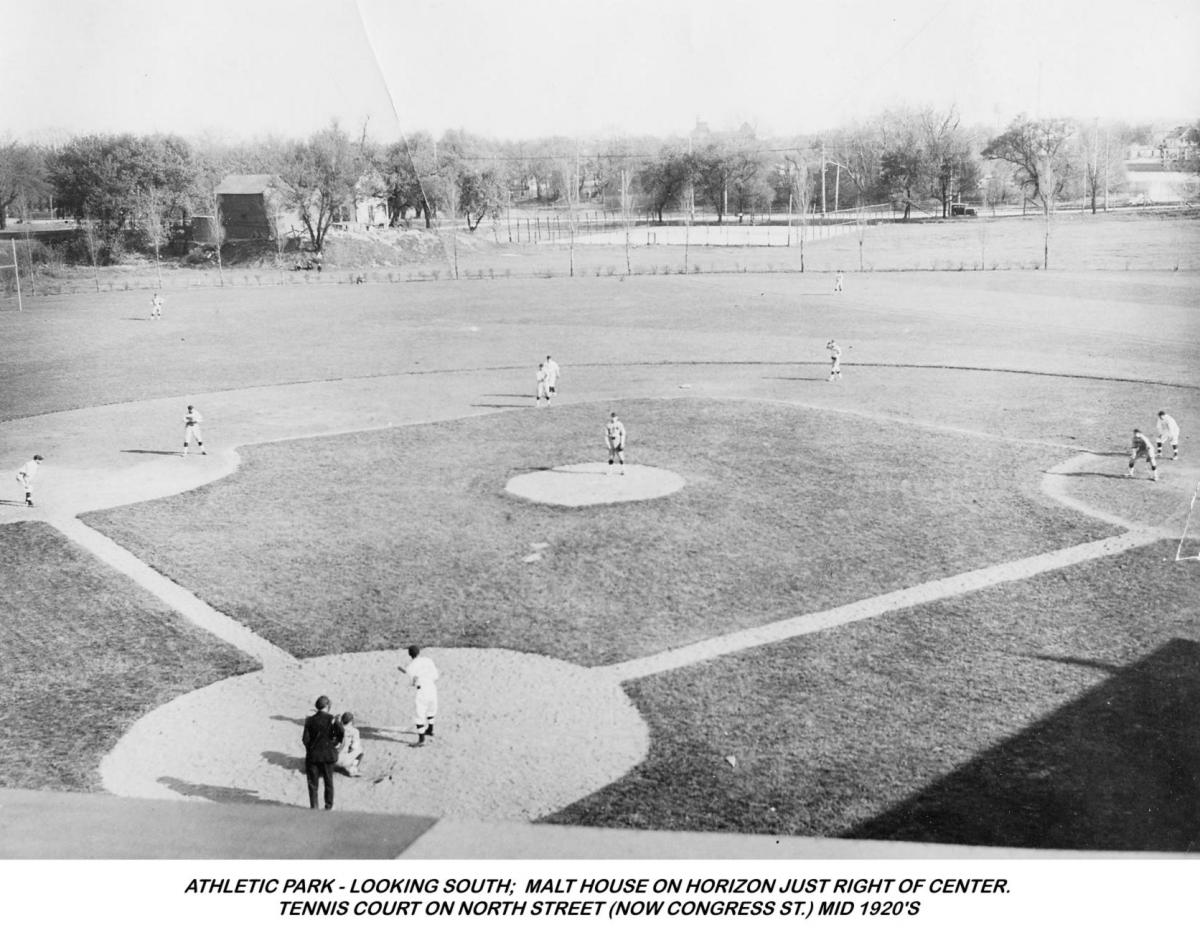
-- The passing of the mud hole into the new office and sheds of the Wilbur Lumber Co. (now a portion of the Burlington Square parking lot on Chestnut Street) (1926).
- - - - -
Many Suggestions Implemented
Many of Frook's 1928 suggestions were implemented over the years. Some -- such as construction of a sanitary sewer and concrete pavement on McHenry Street and electrical illumination of all main arteries leading into the city -- would no doubt have come about regardless of Frook's suggestions. Others -- such as construction of a band shell, establishment of a municipal bathing beach at Brown's Lake, inauguration of a juvenile police group to regulate traffic at the schools, and creation of a city planning commission -- eventually were adopted.
A drive to solicit contributions for a band stand at Echo Park was held during 1934. Action was taken to acquire land for a public beach at Brown's Lake in the 1930s and 1940s, culminating in the county's purchase of land for Fischer Park in 1947. The Safety Cadet program was organized in the Burlington schools in 1936. And a City Plan Commission, whose initial members were Roman Erdman, Sherman Dudley, and Carl Treichel, was created in 1941.
At least one of Frook's suggestions -- construction of an airport within the city -- would not prove to be practical given the later increases in airplane size and air traffic. However, a committee, comprising members of the Kiwanis and Rotary Clubs, the American Legion, and the Association (now Chamber) of Commerce, began in 1929 to seek a site for an airport in the immediate neighborhood of Burlington.
Today, almost 75 years after Frook's 1928 suggestions were printed, the first one he listed and the one to which his name will forever be linked -- construction of a modern viaduct over the Fox River and the railroad tracks on State Street -- although a bit altered and maybe not entirely on State Street, is finally in sight. The city has acquired several parcels and work on the bridge is scheduled to begin this year (2002). (Note: The Fox River bridge linking State and Adams streets opened in August 2004.)
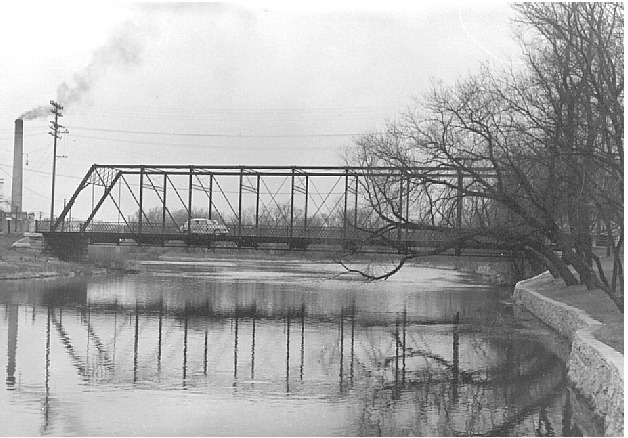
Right is the iron bridge across the Fox River at Jefferson Street as it appeared in November 1948. (E. A. Raettig photo) This bridge, which Bill Frook sought to have replaced with a State Street bridge or viaduct, was built in 1893 to replace an earlier iron one.
A bridge, first wooden, then iron, and now concrete, has crossed the Fox River at Jefferson Street since Burlington's earliest days. After city voters turned down a proposed State street viaduct in a 1941 referendum, the State and city both authorized funding for replacing the iron bridge at Jefferson Street, but Racine County refused to authorize its share, and the project was dropped.
In October 1948 the State again authorized replacing the Jefferson Street bridge, 